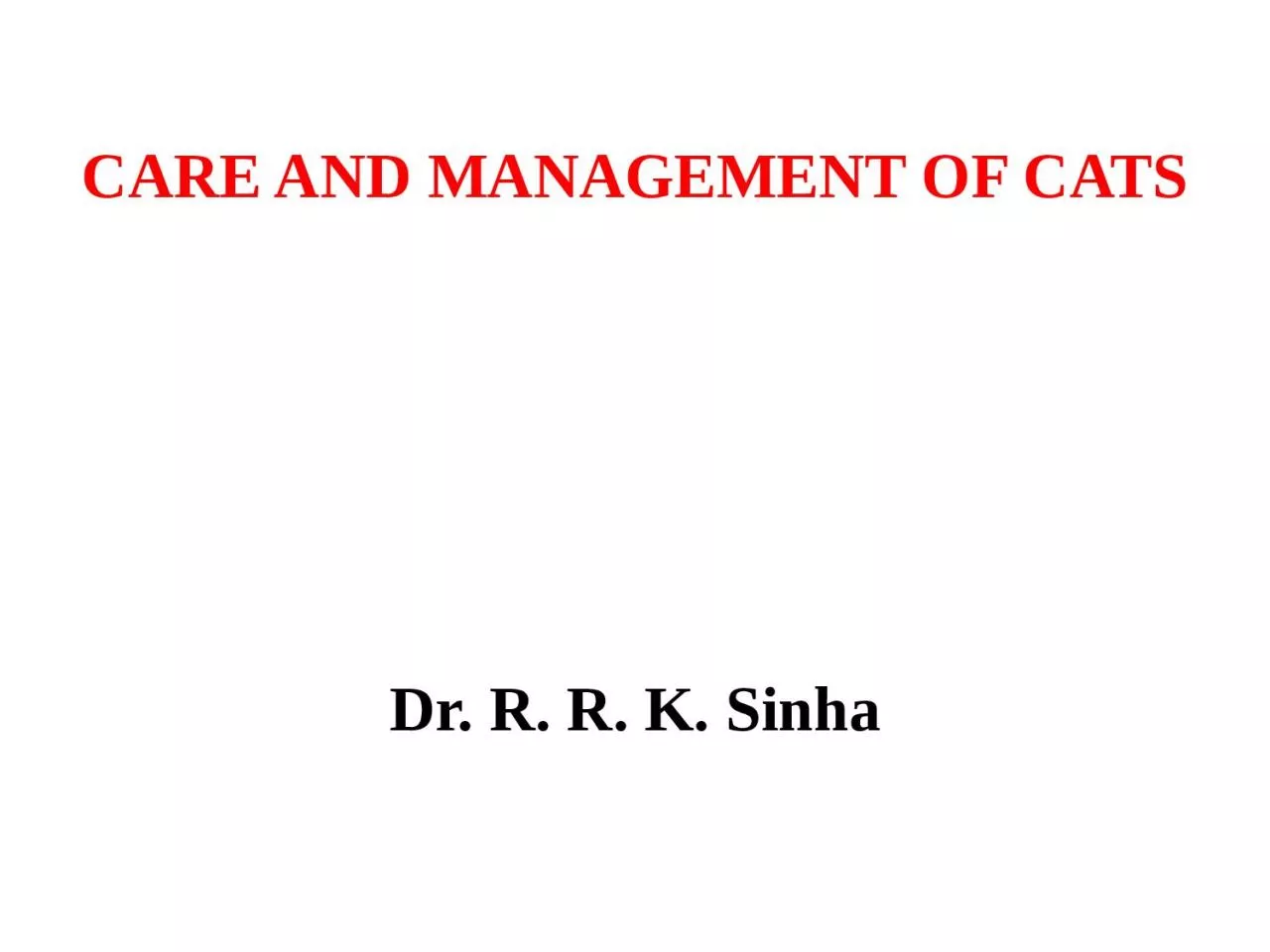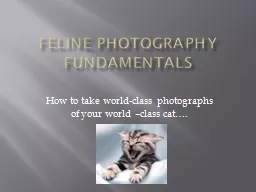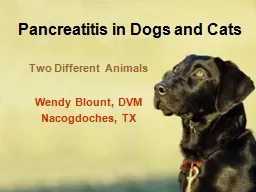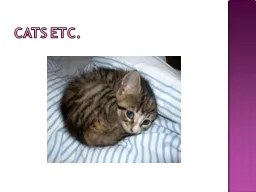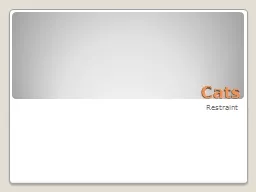PPT-CARE AND MANAGEMENT OF CATS
Author : yvonne | Published Date : 2023-09-21
Dr R R K Sinha CATS Zoological Classification Class Mammalia Order Carnivora Genus Felis Family Felidae Species Domesticus Scientific Name Felis domesticus
Presentation Embed Code
Download Presentation
Download Presentation The PPT/PDF document "CARE AND MANAGEMENT OF CATS" is the property of its rightful owner. Permission is granted to download and print the materials on this website for personal, non-commercial use only, and to display it on your personal computer provided you do not modify the materials and that you retain all copyright notices contained in the materials. By downloading content from our website, you accept the terms of this agreement.
CARE AND MANAGEMENT OF CATS: Transcript
Download Rules Of Document
"CARE AND MANAGEMENT OF CATS"The content belongs to its owner. You may download and print it for personal use, without modification, and keep all copyright notices. By downloading, you agree to these terms.
Related Documents

